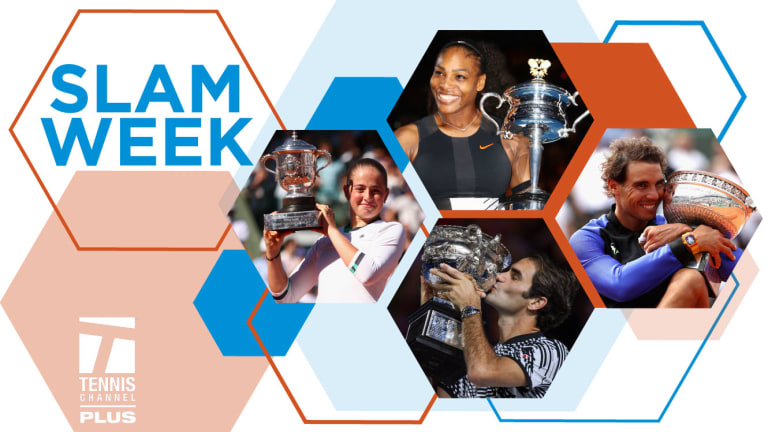The U.S. Open's plan to allow coaching during play in the qualifying event has drawn differing responses from Roger Federer and Novak Djokovic.
The tournament will let players speak to coaches while they are on the same side of the court, and use gestures when the player is on the other side of the court. A 25-second shot clock will also be used to enforce the maximum period allowed between points, an expansion from its introduction in the 2016 tournament's collegiate event.
Federer expressed reservations about the move, though he noted that such coaching does occur against the rules.
"I'm not all for it," he said. "I find it kind of cool that in tennis, you know, you're sort of on your own out there. Not everybody has the same amount of resources for coaching, as well. So I'm not sure if it's that beneficial. But, you know, might be interesting for some people to see. I know that some parts of the world, coaching at junior level and all that stuff is totally normal, that the coaches and the players speak.
"I'm sure it's not going to make that much of a difference because I'm sure there's hand signs going on as we speak ... It doesn't take much to understand that message. I'm not really for it."
Federer, who has sometimes complained about slow play, was more positive about the shot clock but was not sure whether it was the best way of enforcing the rule.
"The shot clock is an interesting one. But how do you judge, you know—when you finish after a drop shot, it's been a tough rally, the guy has to run back to the baseline," he said. "Sometimes we need to have some leeway. But I do believe we should enforce the rule at some stage, somehow, because maybe too many players have gone over the limit. That's where we are now. I'm not sure if it's good, but give it a try, I guess."
But Djokovic likes allowing players to talk to coaches, and not just at the U.S. Open. He supports the ATP’s plan to trial earphone conversations between players and coaches.
"I think that's a cool idea, to be honest," he said. "Signalizing different symbols is a little bit—I have to think about that. But when you have your player on your side, it's fine. Of course, when it's within that time limit, respect towards the other player, the rhythm of the server. The headset, also, I think is fine. This is kind of an intimate conversation where you feel comfortable, that you communicate wirelessly with your coach who is there.
"I think it is also a good idea for the commercial part. Obviously there's a lot of headset companies that would probably include their budget into tennis, which is always great. But I don't know. They've said that the TV audience possibly could hear what you were speaking with your player. Still have to be a bit careful.”
Djokovic added that he doesn't see why tennis, unlike most sports, does not allow coach involvement during play.
"When the WTA introduced on-court coaching, many ATP players were not really positive about it. I thought it was a good move for the sport," he said. "I mean, we're probably one of the only, maybe [the] only global sport that doesn't use coaching during the play. Even golf, individual sport, you have caddies that you communicate with throughout the entire course."
The new rules will also be used for the junior and college events at the U.S. Open.
